Fort Vancouver remains a vital link to America’s history in the heart of Washington’s Pacific Northwest.
The National Historic Site offers a glimpse into the 19th-century fur trade and military presence, providing a unique educational experience for visitors.
Exploring Fort Vancouver allows one to step back in time and understand the daily lives of traders, soldiers, and indigenous peoples.
The site has a fascinating history, from reconstructed buildings to authentic artifacts.
A visit to Fort Vancouver also offers interactive exhibits and living history demonstrations.
These activities make history come alive and immerse visitors in the region’s cultural tapestry.
History of Fort Vancouver (Washington)
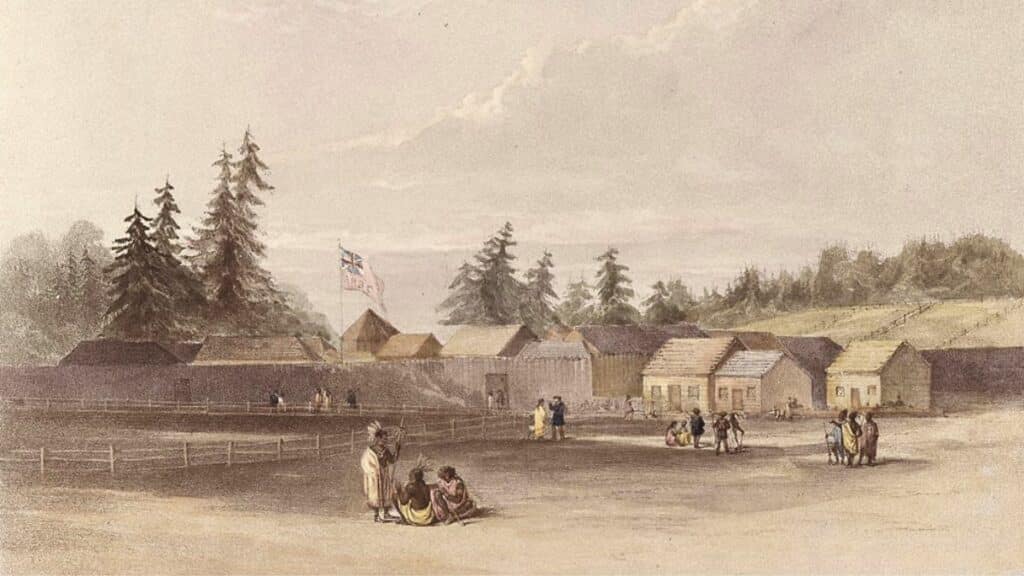
Fort Vancouver, situated in present-day Vancouver, Washington, played an essential role in the region’s history. It went through various historical phases, including the fur trade, military history, and preservation as a national park.
Origins of Fort Vancouver
Fort Vancouver was established in 1825 by the Hudson’s Bay Company. Its strategic location on the Columbia River facilitated trading activities and became a hub of economic and social life in the Pacific Northwest.
The fort was the headquarters for the company’s Columbia District and was pivotal for controlling the fur trade.
The fort’s construction utilized local timber, rapidly expanding to include a school, hospital, and various workshops.
Relations with local indigenous tribes were complex and marked by trade and conflict.
Fort Vancouver became a model trading post, attracting settlers and fur traders from diverse backgrounds.
Hudson’s Bay Company and the Fur Trade
Hudson’s Bay Company (HBC) managed Fort Vancouver to control the fur trade in the Pacific Northwest. Under its direction, beaver pelts became a significant trade commodity.
The fort was the focal point for collecting and processing furs before shipping them to European markets.
The HBC implemented a vast network of trade routes extending to Alaska and California.
Indigenous peoples played a crucial role as fur trappers and traders, integrating into the fort’s economic activities.
The prosperous trade generated wealth and facilitated settlement in the region.
Dr. John McLoughlin’s Leadership
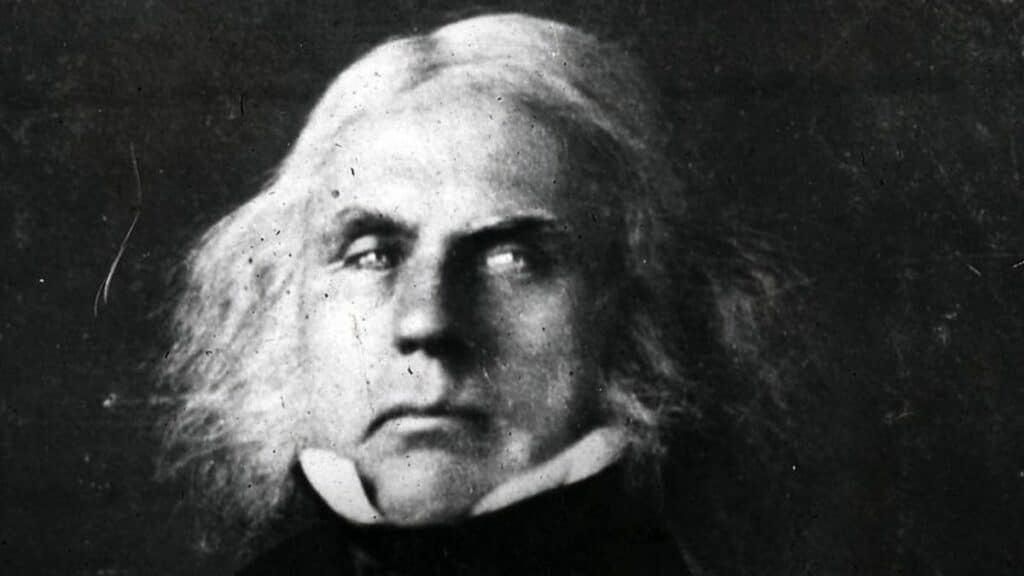
Dr. John McLoughlin, often regarded as the “Father of Oregon,” led Fort Vancouver from 1825 to 1845. His leadership significantly influenced the fort’s operations and role in the Pacific Northwest.
McLoughlin was known for his fair dealings with both settlers and indigenous tribes.
He assisted American settlers arriving via the Oregon Trail, offering supplies and medical care.
McLoughlin’s policies and actions helped maintain peace and fostered a growing community around the fort.
His leadership established Fort Vancouver as a critical support center for westward expansion.
Oregon Territory and American Expansion
The Oregon Treaty of 1846 marked a turning point for Fort Vancouver.
The treaty resolved territorial disputes between the British and Americans, with the region south of the 49th parallel coming under U.S. control. This transition diminished the Hudson’s Bay Company’s influence.
American settlers increasingly populated the area, transforming Fort Vancouver into a vital support and supply center for the newcomers.
The fort’s adaptation to changing political landscapes highlights its resilience and continuing significance in the region’s history as American expansion progressed.
The Military Era at Vancouver Barracks
In 1849, the U.S. Army established Vancouver Barracks adjacent to Fort Vancouver, ushering in a new military era. The barracks served as a key military installation, providing a base for operations throughout the Northwest.
It played a role in conflicts such as the Yakima War and had a presence during the Civil War and the Spanish-American War.
The military’s presence brought infrastructure, including better roads and communication lines, further integrating the region into the broader United States.
The barracks highlighted the fort’s strategic importance and continued its legacy as a center of regional influence.
National Park Service and Preservation Efforts
Fort Vancouver was designated a national monument in 1948 and later became part of the National Park Service. The site is listed on the National Register of Historic Places.
Preservation efforts focus on maintaining and interpreting the site’s historic structures and artifacts.
The National Park Service has restored significant parts of the fort, allowing visitors to experience its rich history firsthand.
Educational programs and reenactments help convey the fort’s historical significance.
These preservation efforts ensure that Fort Vancouver remains a vital link to the past for future generations.
Cultural and Community Impact
Fort Vancouver has significantly shaped the local community, influencing various cultural, economic, and educational aspects.
It has been a focal point for the local economy, supported civic engagement, and provided educational opportunities.
Indigenous Peoples and the Fort

The Chinook and other indigenous peoples had a significant relationship with Fort Vancouver. They engaged in trade, exchanging furs and other goods for European tools and resources.
This exchange fostered a unique cultural blend and cooperation.
The fort’s presence also brought challenges, including displacement and cultural shifts for the indigenous peoples.
Despite this, many descendants of these communities continue to live in the area today, contributing to its rich cultural heritage.
Economic and Commercial Development
Fort Vancouver was once a bustling hub of commerce. It facilitated trade routes, contributing to the economic development of the Pacific Northwest.
The trade-in fur pelts was particularly lucrative, driving economic activity and attracting settlers.
The commercial activities around the fort helped lay the foundation for what eventually became the city of Vancouver.
Resources such as timber and fish also played vital roles in sustaining the community and promoting economic growth.
Educational Contributions
Fort Vancouver has contributed to education through various means. Historical programs and interpretive resources are available for schools, providing students with valuable insights into the past.
Schools in the area often utilize the fort as a living classroom. The fort’s preservation allows for the practical study of history and culture, enriching the community’s educational landscape.
Civic Engagement and Public Use
The site now serves as a public park, offering numerous recreational facilities. It includes parking areas, picnic spots, and walking trails, making it a popular destination for citizens of Vancouver and beyond.
Civic engagement activities at Fort Vancouver include historical reenactments and community events.
These activities foster a sense of public involvement and historical appreciation, underlining the fort’s lasting impact on the city’s cultural and social fabric.
Fort Vancouver Today
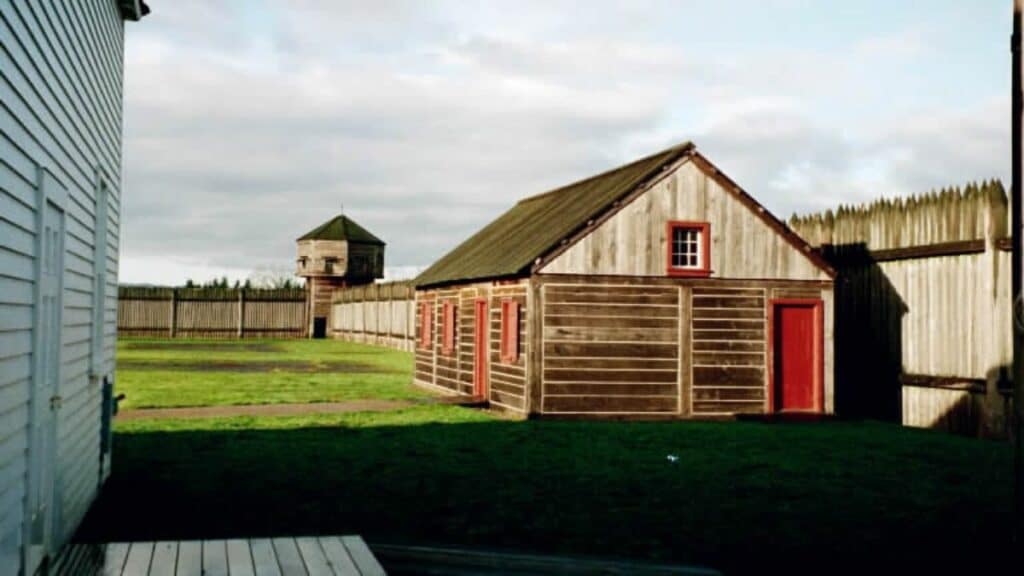
Fort Vancouver, situated in Vancouver, Washington, offers visitors a rich historical experience.
Present-day attractions include a visitor center, educational programs, community events, and comprehensive restoration efforts to preserve the cultural landscape.
Visitor Center and Educational Programs
The Visitor Center at Fort Vancouver National Historic Site is a hub for information and learning. Open daily with designated operating hours, it provides an in-depth look into the site’s history.
Interactive exhibits and educational programs engage visitors of all ages.
Guided tours offer insights into the fort’s significance, and workshops enable hands-on learning.
Collaborations with local schools bring history to life through special curricula.
The resources available aim to foster a deeper appreciation of Fort Vancouver’s past and present.
Restoration and the Cultural Landscape Report
The Cultural Landscape Report outlines the historical significance and preservation strategies for Fort Vancouver, which guides restoration efforts.
This document informs all restoration activities, ensuring the fort remains true to its historic roots.
The report covers various elements, including the architecture, gardens, and surrounding landscape.
Restoration projects might include refurbishing historical buildings and maintaining the authentic appearance of the grounds.
The goal is to create an immersive and accurate representation of the early 19th-century site.
Events and Community Engagement
Fort Vancouver actively engages the community through various events throughout the year. Historical reenactments, cultural festivals, and educational workshops draw locals and tourists.
These events provide an interactive way to learn about the site’s history.
Pearson Field, nearby, occasionally hosts aviation events, adding to the community spirit.
Public participation is encouraged, and volunteers often play a significant role in organizing and running these events.
The vibrant community involvement enhances the visitor experience and keeps the history of Fort Vancouver alive.
Archaeological and Architectural Highlights
Fort Vancouver offers many archaeological and architectural sites that exemplify its historical significance. From reconstructed buildings to military posts, these highlights provide visitors with a tangible link to the past.
The Fort Complex and Reconstructed Buildings
The heart of Fort Vancouver lies in its reconstructed buildings, which replicate the original buildings of the Hudson’s Bay Company fur trading post.
The fort’s layout reflects historical accuracy.
Key buildings include the Chief Factor’s House and the Bake House.
Artifacts uncovered during excavations, such as tools and pottery, provide insight into life at the fort.
The effort to replicate the fort preserves its history and educates the public about its role in trade and daily life.
Vancouver Barracks and Military History
Adjacent to the fort, Vancouver Barracks has a storied military history. Established in the mid-19th century as a U.S. Army post, these barracks played a critical defense role for the Pacific Northwest.
The barracks hosted many famous military figures. Structures such as the Grant House and various officer quarters still testify to the military presence.
Today, they offer a peek into military architecture and the barracks’ function through various exhibitions and preserved buildings.
Officers’ Row and McLoughlin House
Officers’ Row is a prominent residential street lined with historic homes. Built-in the late 19th century, these homes housed military officers and their families.
The row includes 21 houses, with the Grant House and Marshall House particularly notable.
The McLoughlin House, part of the same historic framework, belonged to Dr. John McLoughlin, a pivotal figure in the region’s early development.
These buildings tell stories of domestic life and the social structure among military and civilian communities.
Pearson Air Museum and Hangars
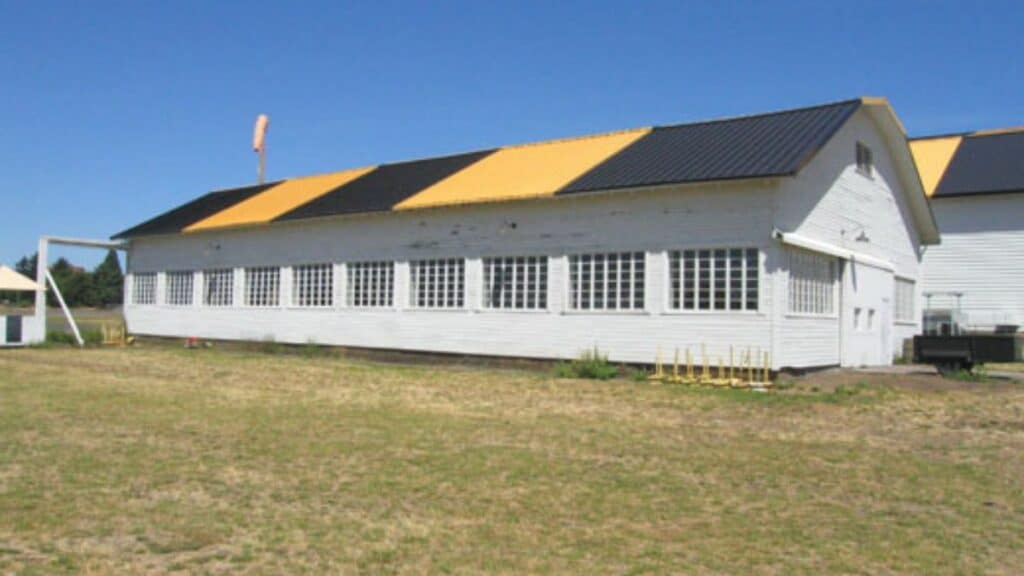
Pearson Air Museum, located near the fort, offers insights into early aviation history. This museum celebrates the legacy of Pearson Field, one of the oldest continuously operating airfields in the United States.
Exhibits include aircraft from different eras and aviation artifacts.
The hangars, dating back to World War I, highlight the evolution of military and civil aviation.
Tours and interactive displays connect visitors with this field’s advancements and historical milestones.
Exploration and Settlement
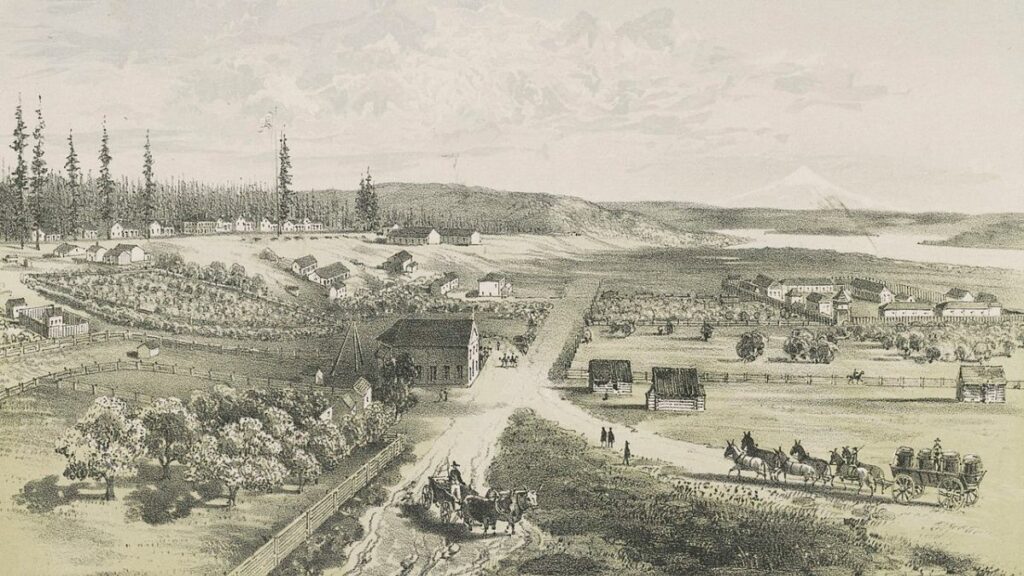
The exploration and settlement of Fort Vancouver were pivotal in shaping the Pacific Northwest. It began with early expeditions and expanded through trade routes.
Early Expeditions and Trade Routes
The fur trade drove the first significant explorations. Explorers like David Thompson and Lewis and Clark mapped routes through the Rocky Mountains to the Columbia River.
The Hudson’s Bay Company established Fort Vancouver in 1825, making it a crucial hub for fur pelts.
The fort became a center for trade routes extending from the Columbia River to the Willamette River, linking the Pacific Coast with inland territories.
Settlement Patterns and Community Growth
Settlers began arriving in the early 1830s, drawn by the fertile lands around the Columbia and Willamette Rivers. Fort Vancouver served as a supply depot for new arrivals, aiding in establishing agricultural communities.
This increased settlement led to diverse community growth, with individuals from the United Kingdom, Indigenous tribes, and American settlers contributing to a multicultural population.
Transition from British to American Control
The Oregon boundary dispute between the United Kingdom and the United States was a significant aspect of Fort Vancouver’s history. The dispute culminated in the Oregon Treaty 1846, establishing American territory control.
Fort Vancouver became part of the U.S. Army’s network, adapting from a British fur trading post to an American military outpost.
This transition marked a new era in the region’s development and governance.
Preservation and Archaeology
Efforts to preserve Fort Vancouver have been ongoing, ensuring its rich history is safeguarded for future generations.
These initiatives include comprehensive archaeological work, the site’s designation as a National Historic Site, and public outreach programs.
Continued Excavation and Discovery
Ongoing archaeological work has uncovered valuable artifacts from Fort Vancouver’s past. Excavations have revealed items from the Hudson’s Bay Company era, including tools, ceramics, and traders’ personal belongings.
The work helps understand daily life at the Columbia Department headquarters.
Archaeologists continue to find remnants from World War II, overlaying the history of the stockade with military presence.
These continuous discoveries provide insights into the diverse history embedded in the site.
National Historic Site Designation
Fort Vancouver was designated a National Historic Site by Congress in 1948. This designation helps protect the site and ensures federal support for its preservation.
Managed by the National Park Service, it includes critical areas like the reconstructed stockade and artifact-storing facilities.
The prioritization of preservation led to the reinstating of historic structures.
Efforts are made to maintain the site’s integrity, allowing visitors to experience an authentic historical environment.
Public Accessibility and Education
Fort Vancouver emphasizes public engagement and education. The Visitor Center offers exhibits, guided tours, and interactive displays, making the site’s history accessible.
Educational programs, including field trips and workshops, engage students and visitors.
Events like living history demonstrations recreate historical scenarios, illustrating life in the 19th century. These initiatives foster public appreciation and understanding of the site’s historical significance.
Explore More: Historic Forts in Washington State: A Look at Military Installations
Daily Life and Infrastructure
Fort Vancouver was a bustling hub of activity, housing varied roles and industries that supported its economic and military functions.
Encompassing a mix of commerce, military strategy, and craftsmanship, the daily life within the fort was a harmonious blend designed to sustain and protect its community.
Trade and Labor within the Fort
Fort Vancouver was central to the fur trade network in the region. The Hudson’s Bay Company operated within the fort, where workers trapped, prepared, and traded fur.
Various labor was necessary, including blacksmiths, carpenters, and cooks.
Blacksmiths worked in the blacksmith shop to forge tools and repair equipment, while carpenters produced furniture and constructed buildings.
The kitchen was a focal point for meal preparation, supporting the workers and residents. This combination of skilled and unskilled labor contributed to the fort’s self-sufficiency and economic viability.
Military Infrastructure and the Role of the Barracks
Functioning as a military post, Fort Vancouver included the U.S. Army’s Vancouver Barracks. These barracks housed soldiers vital to maintaining security and managing conflicts.
The fort also contained defensive structures and storage buildings for military supplies. The US Army’s presence protected trade routes and the fort itself.
Additionally, soldiers constructed and maintained infrastructure and responded to external threats, such as conflicts or fires.
Craft and Industry
The fort’s industry was diverse, catering to immediate needs and trade. Craft and industry sites included the blacksmith, carpenter, and shipyard.
Blacksmiths produced essential metalwork items, while the carpenter shop focused on woodwork.
The shipyard enabled the construction and repair of naval vessels, supporting transportation and trade.
These industrial activities were crucial for sustaining daily life and trade operations, fostering a well-rounded and resilient community within Fort Vancouver.
The Impact of Conflicts on Fort Vancouver
Conflicts significantly influenced Fort Vancouver’s operations and infrastructure. The Spanish-American War and other local disputes often required military intervention, adjusting focus and resources at the fort.
Economic stability could be disrupted, and infrastructure damaged during such events. Post-conflict recovery often led to rebuilding efforts, restoring and sometimes enhancing the fort’s structures.
Understanding these impacts provides insight into the resilience and adaptability of Fort Vancouver through turbulent periods.

Cory is a website owner and content creator who enjoys fishing, history, coin collecting, and sports, among other hobbies. He is a husband and father of four.
Romans 15:4 For whatever was written in former days was written for our instruction, that through endurance and through the encouragement of the Scriptures we might have hope.

